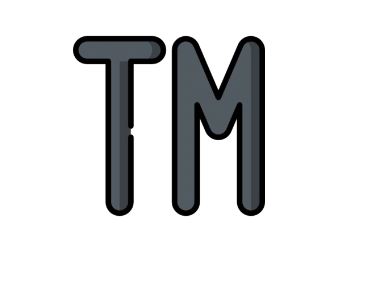Protection of Trademarks in Cambodia
Introduction
Cambodia is a member of the World Intellectual Property Organization (WIPO) since July 1995 and of the Paris Convention for Protection of Industrial Property since September 1998. Regarding the IPR matters, Cambodia has issued the following legal documents:
• Law concerning Marks, Trade Name and Acts of Unfair Competition dated January 8, 2002;
• Law on Patents, Utility Model Certificates and Industrial Designs, in force since January 2003;
• Law on Copyright and Related Right, in force since March 2003.

Trademark and other subjects of industrial property, such as patent, industrial design, utility solution, etc. now can be filed and protected in the country. Cambodia has adopted the “first to file” system of registration.
Cambodian trademark law defines a “mark” as any visible sign capable of distinguishing the goods (trademark) or services (service mark) of an enterprise. Such signs specifically include words, names, letters, numerals, logos, devices, labels, signatures, slogans, colours (and colours combinations), shapes, three-dimensional signs, and holograms. Thus, the shape and look of a product, as well as its packaging, are registerable. Non-traditional non-visible marks, such as sound, smell, gestures and motion, are not capable of being registered. Colour marks must consist of at least two colours, which excludes single-color marks.
A collective mark is a trademark owned by an organization, whose members use it to identify themselves with a level of quality or geographical origin or other characteristics set by the organization. The “collective mark” must be a visible sign capable of distinguishing origin or any other common characteristic, including the quality of goods or services of different enterprise which use the sign under the control of the registered owner of the collective work.
Cambodia adopts the International Classification of Goods and Services under the Nice Agreement (8th Edition. Trademark, services mark and collective mark are registrable in Cambodia; however, each trademark application can be applied for one mark in one class of goods/services only. Priority right can be claimed in accordance with the Paris Convention. Formality and substantive examination shall be conducted for all trademark applications filed in Cambodia. The substantive examination is conducted to identify any prior registered mark which are identical with or similar to the claimed mark. Certificate of Trademark Registration is usually granted within 6-8 months from the filing date. To file a trademark application in Cambodia, the following information and documents are required:
i. Full name and address of the applicant;
ii. Trademark specimens (20 specimens) with the size not larger than 80mm x 80 mm and not smaller 50mm x 50mm;
iii. Translation and transliteration of the mark if the mark is not in English;
iv. Vienna Code of the device of the mark (if known);
v. A list of goods/services and the International Classification of respective goods/services (if known). From January 1, 2007, class heading is not accepted by the Cambodian IPD. The applied goods/services should be specified;
vi. Priority data for claiming priority right under the Paris Convention (if any), including application number, priority date, country. Original certified copy of the priority application and the English translation can be lodged later, after filing; and
vii. A notarized Power of Attorney from the applicant which is described in Section 7 hereunder. Power of Attorney should be notarized by a Notary Public in any country, while legalization is not required. One Power of Attorney can be used for plurality if no particular mark is identified in the Power of Attorney. A fax copy is acceptable at filing provided that the original is submitted later.
The term of protection of trademark in Cambodia is 10 years from the date of filing (or from the priority date, if any). The registered mark is renewable for unlimited times, each of 10 years. The trademark owner shall be obliged to use the trademark in Cambodia. At the end of each period of 5 years from the date of registration, an Affidavit of Use, in case that the mark has been used in Cambodia, or an Affidavit of Non-Use, if the mark has not been used in Cambodia, is required to be lodged with the Cambodian Trademark Office. If no Affidavit of Use/Non-Use is lodged, the trademark cancellation will be vulnerable to cancellation at a third party’s request.
Use of a registered trademark, service mark, collective mark or trade name without consent from the registered owner will be considered as an act of infringement. Infringers of trademark, service mark, collective mark or trade name are subject to a fine from 1,000,000 to 20,000,000 Riels (approximately USD 250 to USD 5,000) and to imprisonment from one year month to one five years, or both. The fine and sentence for counterfeiting are doubled for a repeated offense. for counterfeiting is doubled, and the sentence increased to a maximum of five years.
Acts of unfair competition are subject to a fine from 5,000,000 to 10,000,000 million Riels (approximately USD 1,250 to USD 2,500) and to imprisonment from one month to one year, or both. Repeat offenders are subject to double in both fine and imprisonment. Managing directors, managers and representatives of juristic persons may be subject to criminal prosecution, unless they can prove that they had neither known nor consented to the commission of the offence. Finally, a court has the authority to order the destruction of any goods found to be infringing, whether or not the defendant was convicted of an offense.
Conclusion
While trademarks, as well as other forms of intellectual property, were protected by law during the French colonial period and following independence in 1953, the administrative and legal systems were largely destroyed in the 1970s. The current trademark laws and administrative system trace their roots to the early 1990s and the Paris Peace Agreement which ended the civil war. In 1991, the External Relations and Trademark Office of the Foreign Trade Division of the Ministry of Commerce was established and began accepting and registering hundreds of international trademarks. Foreign mark applications were applied for and registered under the External Relations and Trademark Office the Foreign Trade Division of the Ministry of Commerce, while domestic mark applications were applied for and registered under the Ministry of Industry, Mines and Energy, despite a lack of law or regulation in force. In 1997, the Intellectual Property Division replaced the previous structure, and was established under the supervision of the Director General of Technical Affairs of the Ministry of Commerce. Two years later, the Ministerial Committee Governing the Three Areas of IP was established to prepare laws relating to Cambodia’s accession to the World Trade Organization.
Author: Tanya Saraswat, in case of any queries please contact/write back to us at support@ipandlegalfilings.com or IP & Legal Filing.


